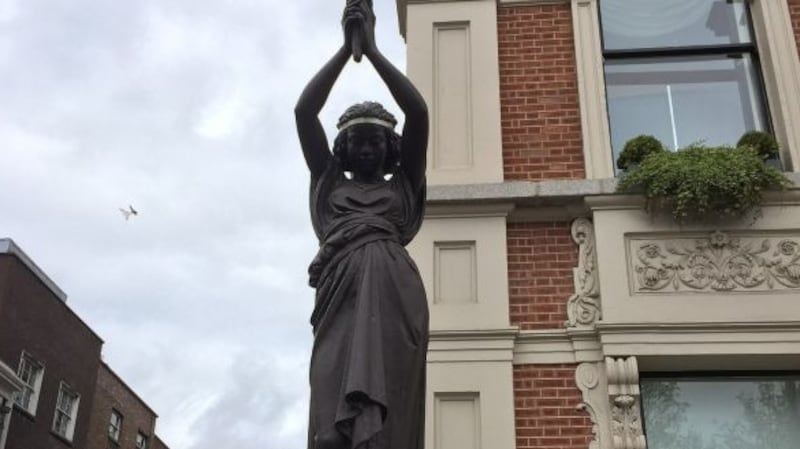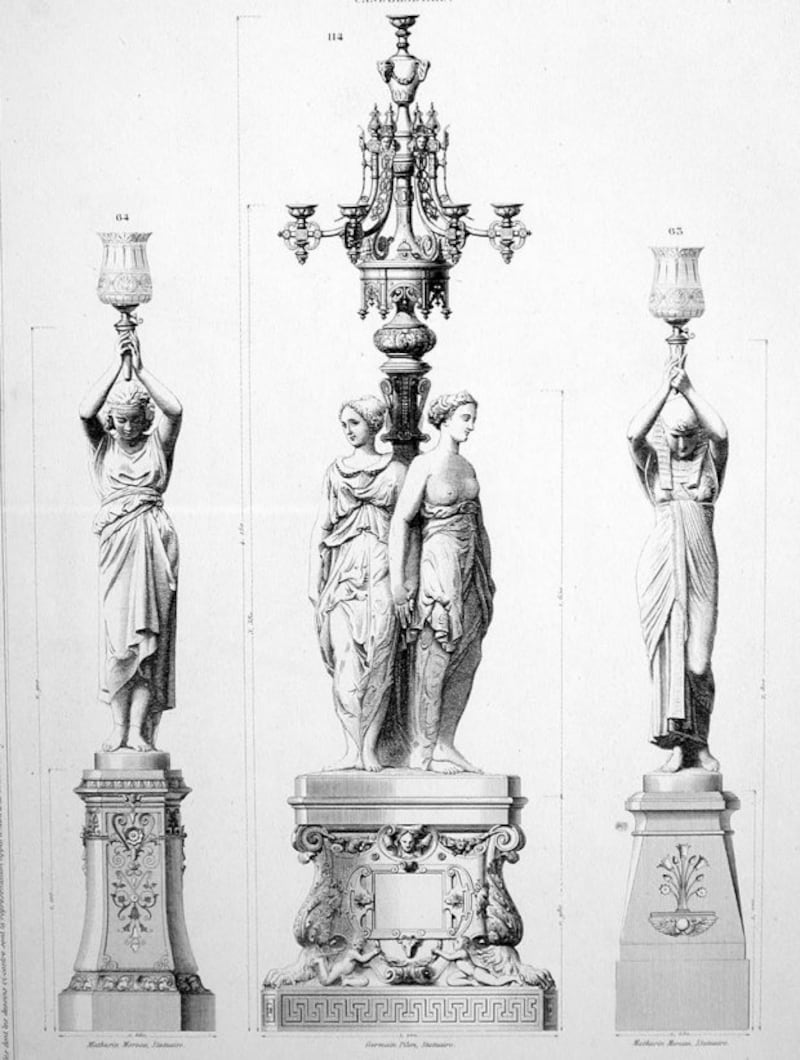Nineteenth century documentation proves conclusively that the statues taken down by the Shelbourne Hotel do not depict slave girls, an art historian has said.
Kyle Leyden, who is a lecturer in the history of art and architecture at the University of London, says the original catalogue from which the four statues were ordered clearly label them not as slaves, but Egyptian and African women.
Hotel management said on Tuesday they took the decision to remove the pieces, which have been in place for 153 years, in light of world events and the Black Lives Matter movement calling attention to the legacy of slavery around the world.

In a statement on Wednesday, Dublin City Council said it was "not aware of permission being granted to remove the statues concerned. "The matter is under investigation by the planning enforcement section and therefore no further comment can be made on the matter at this time."
The catalogue of the Val d'Orsne foundary in Paris, where the statues were cast, has been digitised and is available online.
The statues were originally designed and sculpted by Mathirin Moreau (1822-1912) son of another famous French sculptor, Jean-Baptiste-Louis-Joseph Moreau.
In 1849 he entered into an association with the Val d’Orsne foundry and became one of its directors.
Under the arrangement, he supplied models to be cast and mass produced by the foundry, which could thus sell them on to architects under his name on the basis of his fame as a sculptor. They were sold to those who could not afford an original work.

Mr Leyden said the architect who designed the Shelbourne facade, John McCurdy, would have ordered the four statues from the catalogue, which was published in the late 1850s.
It was clear the from the catalogue that McCurdy ordered two “Égyptienne” female statues to stand astride the front doors of the hotel, and two other two statues entitled “Négresse” for either end of the front facade.
The word "Négresse", as used by the French in the mid-19th century, meant the female figure was of African origin, but not from North Africa.

Mr Leyden explained that, if the statues were intended to depict Nubian slaves, they would have been classified as such because they were in vogue in the mid-1860s.. However, such statues were usually male or female nudes and were depicted in poses of servitude.
The Shelbourne Hotel statues are of well-dressed females in an enlightened pose, he stressed.
“’Nubian slave’ was a well-known and much fetishised nineteenth-century visual trope and to some buyers of statues would no doubt have been an attractive and very fashionable visual reference which was distinctly au courrant,” he said.
"Verdi was writing Aida about a Nubian slave at precisely the time the Shelbourne was being built. If Moreau, the Val d'Orsne company or McCurdy had wanted a statue of a Nubian slave, they would have had no qualms about calling it precisely that."
Mr Leyden said the blame for categorising the statues as slave girls may lie with the novelist Elizabeth Bowen, who described them as "Nubian in aspect; holding a torch-shaped lamp. Two of the four are princesses; two are slave-girls". That description was published in her 1951 book on the Shelbourne Hotel.
“As anyone who has read it can attest, it was never intended to be an academic history of the hotel but rather a novelesque evocation of the place and its people,” Mr Leyden explained.
“ It is not based on what we would today deem to be sound academic research. “Yet this reference has been repeated ad nauseam ever since. There is no source for the slave assertion save Bowen’s own romantic imagination coloured by her knowledge of nineteenth-century Orientalist literary tropes.
"Indeed, several other statues in the catalogue (mainly male) are specifically labelled as Nubian, but not the two chosen at the Shelbourne. They are not slaves. They are not shackled. All four wear golden anklets as symbols of their aristocratic rank. They are all aristocratic women of Egypt and Africa.
“Thus it seems likely McCurdy chose these statues firstly because their proportion suited his building. Secondly, their symbolic message was one of luxury, hinting at the deliciously licentious opulence of the new hotel. Choosing statues from the best art foundry in the world would also have had much currency in promoting the opulence of the hotel.” Mr Leyden said the Shelbourne Hotel had made a wrong decision in getting rid of the statues from their plinths and had clearly misrepresented them as the depiction of slaves.
He suggested the issue could have been easily resolved by placing leaflets at the front door describing the provenance of the statues.
“The statues could become commercial incentives to visits rather than an embarrassment and, should any problems arise, the leaflet will easily explain why they are there,” he said.
Shelbourne Hotel management did not respond to a request for comment.










